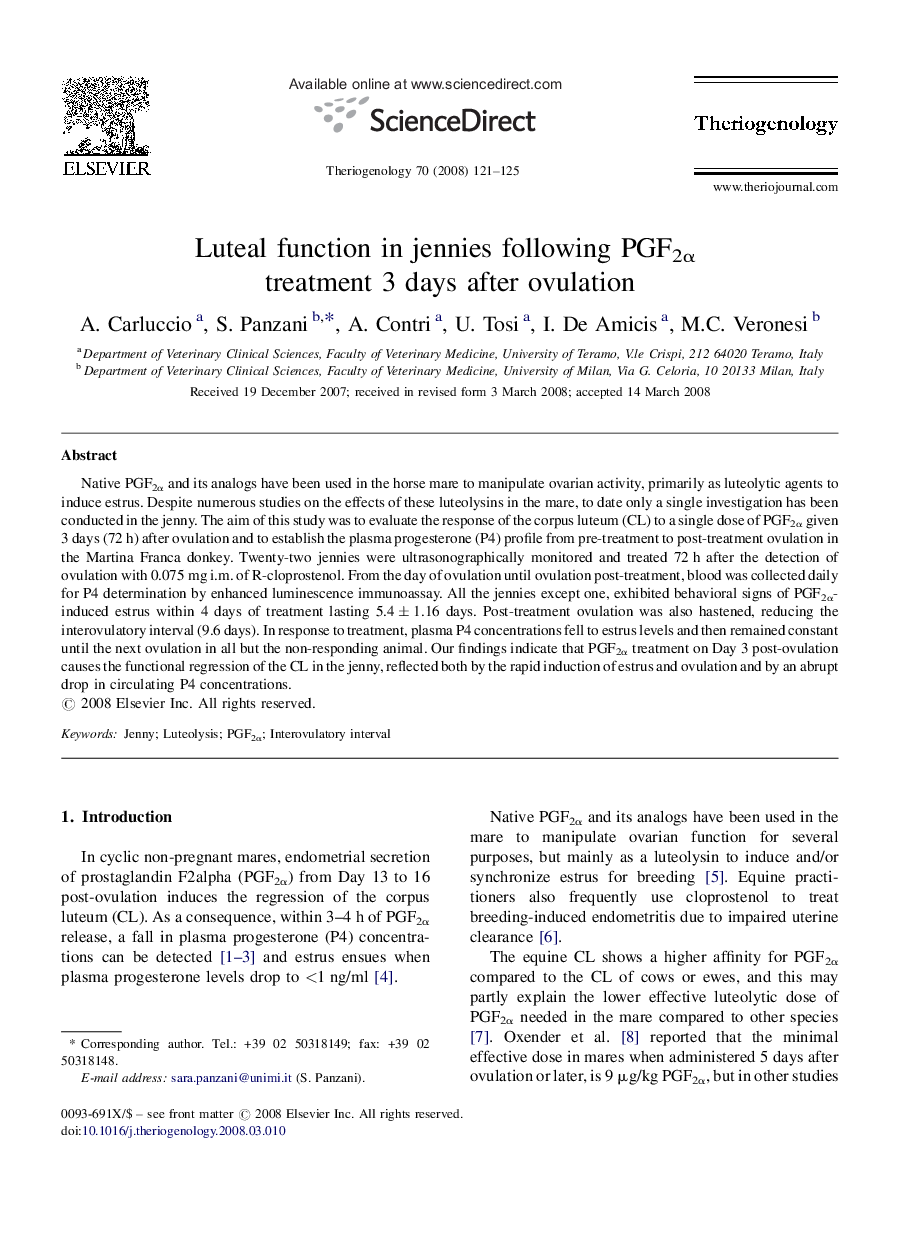| Article ID | Journal | Published Year | Pages | File Type |
|---|---|---|---|---|
| 2096982 | Theriogenology | 2008 | 5 Pages |
Native PGF2α and its analogs have been used in the horse mare to manipulate ovarian activity, primarily as luteolytic agents to induce estrus. Despite numerous studies on the effects of these luteolysins in the mare, to date only a single investigation has been conducted in the jenny. The aim of this study was to evaluate the response of the corpus luteum (CL) to a single dose of PGF2α given 3 days (72 h) after ovulation and to establish the plasma progesterone (P4) profile from pre-treatment to post-treatment ovulation in the Martina Franca donkey. Twenty-two jennies were ultrasonographically monitored and treated 72 h after the detection of ovulation with 0.075 mg i.m. of R-cloprostenol. From the day of ovulation until ovulation post-treatment, blood was collected daily for P4 determination by enhanced luminescence immunoassay. All the jennies except one, exhibited behavioral signs of PGF2α-induced estrus within 4 days of treatment lasting 5.4 ± 1.16 days. Post-treatment ovulation was also hastened, reducing the interovulatory interval (9.6 days). In response to treatment, plasma P4 concentrations fell to estrus levels and then remained constant until the next ovulation in all but the non-responding animal. Our findings indicate that PGF2α treatment on Day 3 post-ovulation causes the functional regression of the CL in the jenny, reflected both by the rapid induction of estrus and ovulation and by an abrupt drop in circulating P4 concentrations.
